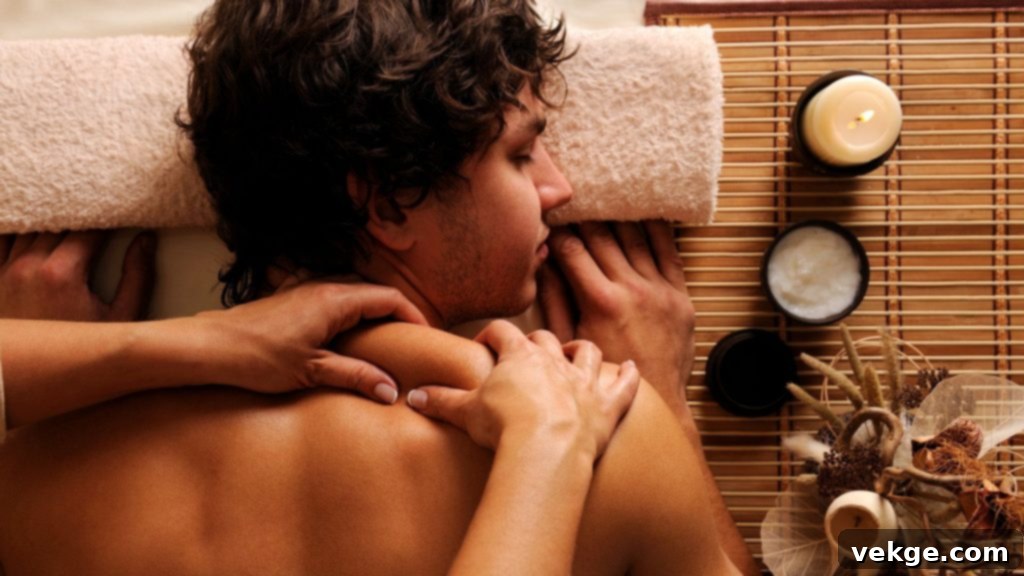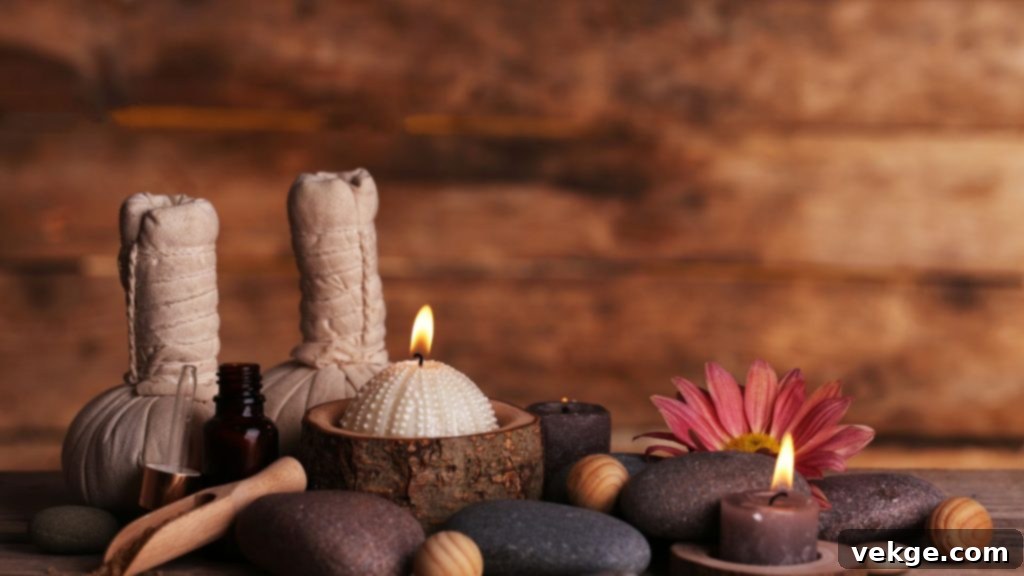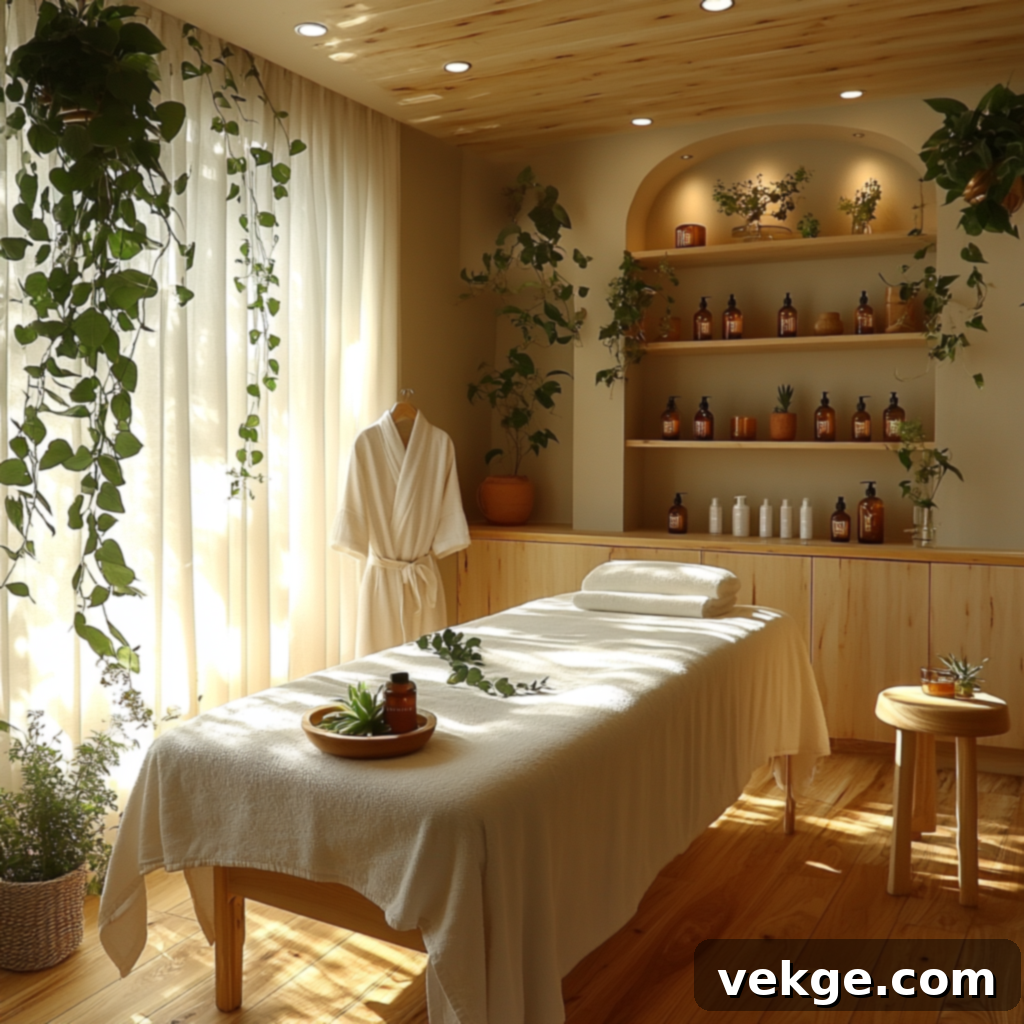Beyond Pain Relief: Integrating Therapeutic Massage for Holistic Wellness in a Fast-Paced Modern Life
Creating a truly balanced and harmonious lifestyle in today’s demanding, fast-paced world demands more than just a beautifully designed home and nutritious recipes. While these elements are crucial for a well-rounded existence, the often-overlooked cornerstone of complete wellness lies in addressing the physical and mental toll that modern living inflicts on our bodies. This is where regular therapeutic massage therapy sessions emerge as the vital, missing piece in your comprehensive wellness routine.
Whether you find yourself battling persistent tension from countless hours hunched over your desk, grappling with the pervasive forward tilt of “tech neck,” or simply seeking an enhanced sense of well-being, incorporating holistic massage therapy techniques into your self-care practice can be profoundly transformative. It’s an investment in your physical and mental health that promises to reshape how you move through your days, bringing the same intentional harmony and thoughtful design to your body that you meticulously craft within your living space.
The Modern Body: Under Siege From Convenience and Digital Demands

Our human bodies, finely tuned over millennia for movement, hunting, and gathering, were simply not designed for the sedentary nature of modern living. The very technological conveniences that streamline our lives and connect us globally also inadvertently create unprecedented physical and mental challenges. Countless hours spent hunched over laptops, continuously scrolling through smartphones, and sitting for prolonged periods in cars or at desks have forged a new normal where our bodies are perpetually held in positions that strain muscles, compress joints, and compromise posture.
This persistent misalignment is akin to walking around in shoes that are perpetually too small or ill-fitting. We might grow accustomed to the chronic discomfort, treating it as an inevitable part of adulthood, but this doesn’t diminish its detrimental effects on every movement, every breath, and our overall well-being. The persistent stiffness in your neck after a morning of answering emails, the tension headache that arrives with an unwelcome punctuality every afternoon, or the nagging lower back pain that flares up after a long period of sitting – these aren’t merely annoying sensations to be ignored or medicated away. They are clear, increasingly urgent messages from your body, signaling that fundamental changes are necessary to restore balance and health.
Massage therapy serves as a powerful and essential reset button, expertly helping to undo the deeply ingrained physical patterns and compensatory behaviors that our convenient yet largely sedentary lifestyles create. It moves beyond being a mere luxury or an occasional indulgence; it is a practical, evidence-based solution to the very real and pervasive physical challenges inherent in modern living. By addressing these foundational issues, massage helps prevent minor aches from escalating into chronic conditions, thus safeguarding your long-term health.
Beyond Relaxation: Unlocking the Profound Therapeutic Benefits of Massage
While most individuals intuitively understand that a massage feels incredibly good and offers immediate relaxation, far fewer fully recognize its legitimate and profound therapeutic benefits for both body and mind. Regular, consistent massage therapy can yield a multitude of advantages, moving beyond surface-level comfort to address deeper physiological and psychological needs:
- Releases Chronic Tension Patterns: Massage targets and melts away deep-seated muscular knots and adhesions that are often the root cause of persistent pain and restricted movement. By applying sustained pressure and specialized techniques, tight muscles are encouraged to relax and lengthen, breaking cycles of chronic pain.
- Improves Circulation and Lymphatic Flow: Through manual manipulation, massage enhances blood flow to compressed tissues, aiding in the delivery of vital nutrients and oxygen while simultaneously facilitating the removal of metabolic waste products. It also stimulates the lymphatic system, crucial for immune function and reducing swelling and inflammation.
- Increases Joint Range of Motion and Flexibility: By loosening tight muscles and connective tissues surrounding joints, massage helps restore natural mobility. This improvement in flexibility can significantly reduce the risk of injury and enhance overall physical performance.
- Reduces Inflammation and Swelling: The improved circulation and lymphatic drainage directly contribute to a reduction in localized inflammation that often exacerbates pain and stiffness in affected areas.
- Supports Better Sleep Quality: By activating the parasympathetic nervous system—our “rest and digest” mode—massage promotes profound relaxation. This deep state of calm can alleviate insomnia and improve the overall quality and duration of sleep, leaving you feeling more refreshed.
- Decreases Stress Hormones: Studies have shown that massage can significantly lower levels of cortisol, the body’s primary stress hormone, while increasing neurotransmitters like serotonin and dopamine, which are associated with feelings of well-being and happiness. This hormonal rebalancing contributes to reduced anxiety and improved mood.
- Enhances Body Awareness: Regular sessions teach you to tune into your body’s signals, recognizing tension as it begins to build rather than waiting until it becomes painful. This heightened proprioception empowers you to make proactive adjustments throughout your day.
These multifaceted benefits work synergistically to create not only immediate relief but also long-term, sustainable improvements in how your body functions and feels. As one experienced massage therapist aptly described the process, it’s like “teaching your body to remember what normal, unrestricted movement feels like.” When muscles have been held in a state of chronic tightness for months or even years, that tension can become the perceived “new normal.” Massage gently yet firmly helps to reset that baseline, reminding your tissues of their optimal, relaxed, and pliable state.
The profound results often come as a pleasant surprise to first-time clients. “I honestly didn’t realize how much tension I was carrying until it was gone,” reported one client after successfully addressing years of chronic shoulder tightness. “It felt like I’d been looking through a dirty window for so long that I’d forgotten what it felt like for the glass to be perfectly clear.” This anecdote powerfully illustrates the subtle yet significant improvements that massage therapy can bring to daily life.
Finding Your Perfect Massage Match: Exploring Diverse Modalities
It’s important to understand that not all massage therapy is created equal. The world of therapeutic massage encompasses a wide array of techniques and philosophies, and finding the right approach tailored to your specific needs can truly transform the experience from merely pleasant to genuinely life-changing. Different modalities are expertly designed to address distinct issues and preferences:
Swedish Massage: Often considered the gateway to massage therapy, Swedish massage utilizes long, flowing strokes, kneading, circular movements, and gentle tapping. Its primary goals are to promote general relaxation, reduce muscle tension, and improve superficial circulation. It’s perfect for newcomers to massage and those primarily seeking stress relief and a gentle introduction to bodywork. Think of it as the foundational comfort—like the neutral, calming paint color in a thoughtfully designed room that allows all other elements to shine and brings overall tranquility.
Deep Tissue Massage: This modality targets chronic tension and adhesions located in deeper layers of muscle and fascia. Therapists employ firmer pressure and more focused, often slower strokes or friction techniques to reach these deep structures. It’s ideally suited for addressing persistent pain patterns stemming from postural issues, repetitive strain injuries, or muscle damage. This approach can be likened to the structural renovation of bodywork—it might involve some temporary discomfort as deeper tissues are released, but the results often create lasting improvement in function and pain reduction.
Myofascial Release: This specialized technique focuses on the fascia, the intricate web of connective tissue that encases and interconnects muscles, bones, and organs throughout the entire body. Using gentle, sustained pressure and stretching, myofascial release helps to identify and release restrictions within this fascial network, which can become tight and restrict movement. This technique is similar to restoring proper flow to a garden hose that has become kinked; once the restriction is released, everything downstream functions more efficiently and harmoniously.
Trigger Point Therapy: This targeted technique identifies and deactivates specific, hypersensitive spots within muscle tissue known as trigger points. These points, often palpable as small, tight knots, can generate referred pain to other areas of the body, creating widespread discomfort. By applying direct, sustained pressure, the therapist helps to release these “mini-spasms.” These trigger points are like the overloaded circuit breakers of your muscular system—when they’re activated, they can cause dysfunction across an entire circuit, and nothing works properly until they are effectively reset.
The most effective therapeutic approach often intelligently combines elements from multiple techniques, customized by a skilled therapist to address your unique patterns of tension, discomfort, and physiological needs. Many experienced massage therapists work intuitively, adapting their approach and pressure based on how your tissues respond and release during each session, ensuring a truly personalized and effective experience.
Creating a Massage-Friendly Home Environment to Extend Wellness Benefits

The profound benefits derived from professional massage therapy sessions don’t have to end when you leave the clinic. You can significantly extend and reinforce these positive effects by consciously creating spaces and practices within your home that actively support continued relief, relaxation, and body awareness. Consider integrating these practical additions and habits into your living environment:
A Dedicated Relaxation Corner: Designate a specific, cozy spot in your home with comfortable, supportive cushions, soft blankets, and perhaps a warm heating pad or a weighted blanket. This creates a powerful physical reminder and an inviting sanctuary to take intentional relaxation breaks throughout your day. Enhance the ambiance with calming elements like aromatherapy diffusers, soft lighting, and gentle, meditative music. This space becomes an explicit invitation to pause, breathe deeply, and consciously check in with your body.
Accessible Self-Massage Tools: Keep simple, effective self-massage tools readily visible and within reach, rather than tucked away in a drawer. Items like tennis balls, lacrosse balls, foam rollers (of varying densities), or massage sticks allow you to address minor tension and stiffness between professional sessions. Learning a few basic techniques for common problem areas like the neck, shoulders, glutes, and feet empowers you to perform quick, targeted self-care whenever needed. Regular, short self-massage sessions can prevent minor discomforts from escalating.
A Consistent Bedtime Stretching Routine: Incorporate a gentle, intentional stretching routine into your nightly ritual. Even just five to ten minutes of slow, mindful movement targeting chronically tight areas (such as neck rolls, shoulder stretches, hip flexor openers, and hamstring stretches) can significantly help to prevent tension from rebuilding overnight. This practice actively maintains the improvements in flexibility and muscle relaxation gained through massage therapy, promoting restorative sleep.
Ergonomic Adjustments for Work and Leisure: Proactively assess and modify your work-from-home setup and leisure areas. This might involve investing in a supportive ergonomic chair, ensuring your computer monitor is at eye level, optimizing keyboard and mouse placement to minimize strain, and utilizing a standing desk converter to alternate positions. These modifications are akin to the preventative maintenance you perform on your car to keep it running smoothly—small, consistent investments that proactively prevent bigger, more painful problems down the line.
Hydration and Nutrition: Remember that muscle health is intrinsically linked to overall hydration and nutrition. Drinking plenty of water helps keep fascial tissues pliable, and a diet rich in anti-inflammatory foods supports muscle recovery. These lifestyle choices work in concert with massage to promote sustained physical well-being.
The Mindfulness Connection: Deepening Body Awareness for Lasting Wellness
Perhaps one of the most profound, yet often overlooked, benefits of regular therapeutic massage is its remarkable ability to cultivate a heightened sense of body awareness that seamlessly carries into every aspect of daily life. When you consistently experience what “relaxed,” “aligned,” and “free-moving” truly feels like in your body, you become far more attuned to the subtle cues and early warning signs when tension begins to build. This enables you to address it proactively, long before it escalates into chronic pain or discomfort.
This heightened awareness creates a powerful and positive feedback loop for your overall well-being. For instance, you might notice tension starting to accumulate in your shoulders while deep in concentration at work, which then instinctively prompts you to adjust your posture, take a brief movement break, or perform a quick self-stretch. These small, conscious interventions are critical; they prevent the insidious accumulation of tension and stress that would otherwise necessitate more intensive therapeutic treatment later on.
One long-term massage client eloquently described this transformative shift in awareness: “Before I started getting regular massages, I only ever truly noticed my body when something was hurting. Now, I catch the subtle signs of tension and misalignment much, much earlier in the day. It’s like I’ve developed an internal early warning system that helps me make minor adjustments and take proactive steps throughout the day, preventing issues from becoming major problems.”
This deep, cultivated mind-body connection profoundly enhances every facet of your wellness journey. It impacts everything from how efficiently and comfortably you move through your home and daily tasks, to how effectively you respond to and manage the myriad stressors of modern life. It instills a sense of intentionality and presence in your physical existence, much in the same way that mindful decorating and design bring harmony and purpose to your living spaces.
Integrating Massage Into Your Wellness Schedule: A Sustainable Approach
Like any impactful wellness practice, such as consistent exercise or mindful eating, therapeutic massage therapy delivers its greatest and most enduring benefits when it is intentionally incorporated as a regular, sustainable part of your lifestyle. To truly maximize its potential and ensure it becomes a core component of your health regimen, consider these strategic approaches for integration:
Schedule Sessions in Advance: Rather than waiting until pain becomes acute, severe, or debilitating, proactively schedule your massage sessions weeks or even months ahead. Monthly or bi-monthly maintenance sessions are incredibly effective at preventing the gradual buildup of tension, stiffness, and stress that often makes more intensive (and potentially more expensive) treatment necessary down the line. Regularity is key to sustained well-being.
Combine with Complementary Practices: Augment the benefits of massage by combining it with other movement-based wellness practices that promote balanced strength, flexibility, and body awareness. Activities like yoga, Pilates, swimming, tai chi, or consistent stretching routines work synergistically with massage. These movement practices help to reinforce the healthy postural patterns, improved flexibility, and muscle balance that massage helps to establish and restore.
Communicate Clearly with Your Massage Therapist: The therapeutic relationship is built on trust and open communication. Always feel empowered to discuss what’s working well, what areas need more attention, what pressure level feels right, and if you have any new concerns or changes in your physical condition. Your feedback is invaluable; it allows your therapist to continuously adapt and evolve their approach to meet your body’s changing needs, ensuring each session is as effective and beneficial as possible.
View Massage as a Health Investment, Not an Indulgence: Shift your perspective to see massage therapy not as a frivolous luxury, but as a critical investment in your long-term health and quality of life. When budgeting for wellness, consider the potential cost savings of preventing chronic pain that might otherwise lead to missed workdays, expensive medical treatments, reliance on pain medication, or a significant decrease in your overall enjoyment of life. Proactive care is often more economical and certainly more beneficial than reactive treatment.
Understand Contraindications: While massage is generally safe and beneficial, it’s essential to be aware that there are certain conditions or situations where massage might be contraindicated or require modification. Always inform your massage therapist of any medical conditions, injuries, or recent surgeries. When in doubt, consult with your doctor before booking a session, especially if you have serious health concerns.
Conclusion: Embrace Holistic Wellness Through Therapeutic Touch
In a world where our bodies are subjected to unprecedented challenges stemming from the demands and conveniences of our modern lifestyle, therapeutic massage therapy offers far more than a mere luxury escape—it provides a profoundly practical and scientifically supported solution to very real physical and emotional problems. By proactively addressing the accumulation of tension, chronic restriction, and persistent pain that so often arise from daily activities and digital engagement, regular massage helps to forge a vital balance between modern convenience and essential physical and mental well-being.
Just as a thoughtfully designed and ergonomically optimized home provides the foundation that supports your best life, a body that moves with ease, comfort, and freedom from pain provides the ultimate foundation for everything else you aspire to do and achieve. By consciously incorporating therapeutic massage therapy into your holistic wellness routine, you effectively extend the harmony, intentionality, and care you bring to your living spaces directly to the very vessel that carries you through each and every day. It’s an empowering step towards a more vibrant, resilient, and balanced existence.
